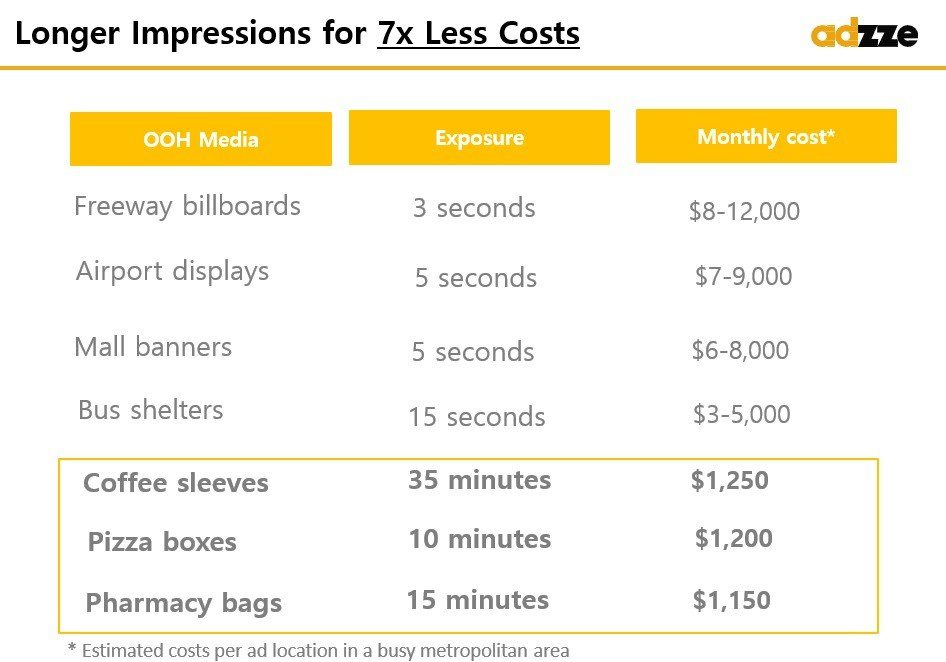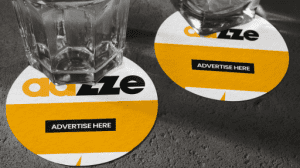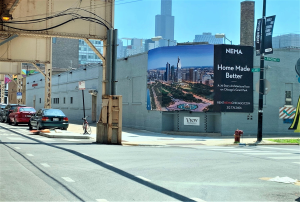Mobile advertising has emerged as one of the most innovative and attention-grabbing marketing strategies in recent years. Among the various forms of mobile advertising, billboard trucks, or mobile billboards, have gained significant traction due to their ability to reach a broad audience while moving through high-traffic areas. However, while mobile billboards are undeniably eye-catching, there’s a deeper layer of understanding required to optimize their use. One of the most fascinating aspects of this advertising medium is the psychology of how consumers perceive mobile billboards compared to traditional, static billboards.
In this blog, we will explore the psychological impact of mobile billboards on consumer behavior, their effectiveness, and why in-hands advertising can deliver a better return on investment (ROI). We will also delve into the benefits of mobile advertising, especially as it compares to other forms of outreach. By the end, you will have a deeper understanding of how consumer perception can impact your advertising strategy and why mobile billboards might not always be the best choice for maximizing ROI.
The Psychological Impact of Mobile Billboards on Consumers
The key to understanding how mobile billboards influence consumer behavior lies in recognizing how people process information from moving vs. static advertisements. There are several psychological factors at play when individuals engage with mobile billboards, and these can vary based on the nature of the ad, the location, and the type of audience being targeted.
Increased Attention and Perceived Relevance 
One of the most powerful psychological effects of mobile billboards is their ability to capture attention. Traditional static billboards, while still effective, can be overlooked after a consumer’s initial glance. Mobile billboards, on the other hand, create a sense of movement and novelty, often stopping people in their tracks. Studies have shown that motion attracts human attention, which is why billboards on trucks, moving through busy streets or stopping at traffic lights, are far more engaging than static, stationary ads.
Moreover, mobile billboards often feel more relevant because they are associated with movement and change. The sight of an advertisement in motion suggests to consumers that the brand is innovative and dynamic, qualities that may resonate with younger, more engaged audiences.
Association with Real-Life Context
Another interesting psychological aspect is that consumers tend to associate mobile billboards with real-world experiences. When an advertisement is placed on a vehicle, especially in a public setting, consumers often connect it with everyday life. They may see the ad while driving home, walking in a busy area, or commuting to work, all of which creates a stronger connection between the advertisement and their own routines. This real-world association increases the emotional relevance of the ad, as it becomes integrated into their daily experiences.
The Novelty Factor
People are naturally curious and drawn to new experiences, and mobile billboards tap into this human tendency. The novelty of seeing an advertisement on a moving vehicle creates intrigue, making it more memorable. It’s not just another static billboard that’s been there for months—it’s something unique, something that stands out. The element of surprise and curiosity associated with mobile advertising gives it an edge over traditional methods, leading to increased recall and stronger consumer engagement.
Psychological Distance
While static billboards are often overlooked because they are seen as part of the background, mobile billboards occupy a different space in the consumer’s mind. Moving ads are perceived as more “close” or personal because they are integrated into a journey or experience. This is especially true if the mobile billboard is directly targeted to a specific event, neighborhood, or demographic area, enhancing its relevance to the consumer. The ability to physically follow an ad as it moves through different locations creates a sense of psychological proximity to the brand.
The Benefits of Mobile Advertising and Consumer Perception
Mobile advertising in the form of billboard trucks is an incredibly powerful tool for businesses. But what are the broader benefits of mobile advertising, and how can they contribute to greater brand recall and customer engagement? Let’s explore some of the most significant benefits of mobile advertising.
1. Targeted Reach
One of the most significant advantages of mobile billboards is the ability to target specific geographic locations. Whether it’s an event, a busy downtown area, or a specific neighborhood, mobile billboards allow brands to strategically place their ads where they know their target audience will be. This targeted reach is far superior to static billboards, which only capture a broader, general audience. Mobile billboards make it easy to concentrate efforts on specific demographics, increasing the likelihood of conversion.
2. High Visibility
Mobile billboards are inherently more visible than static ads. Whether it’s due to the moving nature of the ad, the vibrant design, or the size of the billboard itself, these vehicles are tough to ignore. Their location is constantly changing, which means they stay in consumers’ minds longer. If someone sees the ad on their daily commute and then spots it again in a different location later on, it reinforces brand recognition and recall.
3. Cost-Effective Advertising
The cost of a mobile billboard can vary depending on location, duration, and size, but in many cases, it can be more cost-effective than traditional billboards. While a billboard on a busy highway may come with a premium price, a mobile billboard can offer more targeted exposure at a lower cost. Additionally, you are not locked into a specific location, allowing for more flexibility in your advertising strategy.
4. Engagement Opportunities
Mobile billboards can be used as part of larger interactive campaigns. For example, QR codes or social media hashtags can be included on the ad, driving immediate engagement from consumers. By incentivizing people to take action on the spot, mobile billboards can generate real-time customer interactions, which can lead to conversions or valuable data collection.
Why In-Hands Advertising Delivers Better ROI
While mobile billboards offer many benefits, in-hands advertising is quickly becoming a superior alternative for many marketers looking to maximize ROI. In-hands advertising refers to promotional materials—such as bar coasters, door hangers and coffee sleeves—distributed directly to consumers. This form of advertising offers several advantages that mobile billboards can’t match, especially when it comes to ROI.
1. Precise Targeting
In-hands advertising allows for much more precise targeting than mobile billboards. By distributing promotional items at events, stores, or locations frequented by your ideal customers, you ensure that the audience is highly relevant. This allows businesses to optimize their marketing spend by focusing on the people most likely to convert.
2. Measurable Impact
Unlike mobile billboards, which rely on visibility metrics that are difficult to quantify, in-hands advertising is highly measurable. Marketers can use specific tracking methods—like unique promo codes or QR codes—to gauge how effective the distribution was. This data allows for a more accurate assessment of ROI and provides valuable insights for future campaigns.
3. Higher Engagement
In-hands advertising allows for more direct interaction with the consumer. Whether it’s handing out a free sample, offering a discount coupon, or distributing a branded item, these physical touchpoints create a deeper connection with the audience. Consumers are more likely to engage with an item they hold in their hands, making in-hands advertising a more interactive and memorable experience.
4. Cost-Effectiveness
In-hands advertising is often more cost-effective than mobile billboards, especially when considering production and distribution costs. The price of designing and printing materials is usually lower than that of creating a mobile billboard, and distribution costs can be scaled according to your budget. This makes it an excellent choice for small businesses or brands looking to get the most out of their marketing dollars.









